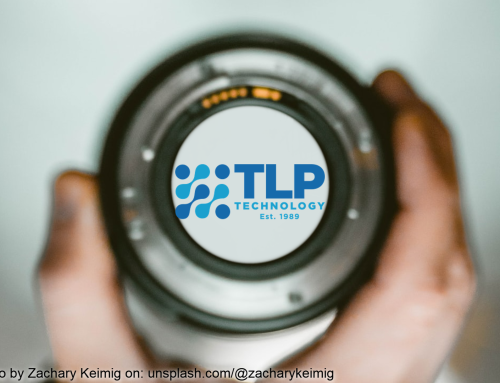Welcome to part 2 in our journey into the technological advancements of the modern Olympic Games. If you haven’t already read the first part in this journey then please do so HERE.
So we now turn to the winter Olympics of 1980 held at Lake Placid, New York. Funny to think that the 1980s Summer Olympics was held in Moscow, while the winter Olympics were held in New York though the time of year obviously makes a difference in temperatures, in New York in february the average temperature is around -1°C to -4°C, ideal temperature for snow however it had been an exceptionally dry year for snow and the winter Olympics were upon a nation and a world in waiting. Though it wasn’t looking likely for New York to receive the much needed snow to get the Olympics underway they had a plan up their sleeves, Snow Machines. For the very first time in history machines that made snow were used for the Games.
Now as incredible and futuristic this must have seemed in 1980, the first known snow machine that didn’t require fast rotating blades and a giant block of ice was invented in 1950 by Art Hunt, Dave Richey and Wayne Pierce. In 1952 a ski resort in New York city Grossinger’s Catskill Resort Hotel became the first in the world to use artificial snow, and in fact all the way up to the 1970s many ski resorts were highly dependent on their snowmaking abilities.
Without getting too technical; a snow machine compresses air which it then forces up through a nozzle where it meets water fed up through another nozzle, when the two collide the air splits the water into tiny droplets which are instantly frozen due to the compressed airs sudden loss of pressure, which strips any heat from the water, the outcome of this chemical reaction is tiny ice particles.
At the Los Angeles summer Olympics of 1984 it was not the amazing technological advancements used during the Games that stole the show, no, it was an act that lasted no more than a minute from start to finish at the opening ceremony that had everyone’s mouths wide open, and every television and radio network throughout the world talking about for many months after, that being Rocketman.
William Suitor had the world in tenterhooks, standing on a platform 90ft overlooking a packed stadium wearing a jetpack called the Bell Rocket Belt that transported William across the Olympic stadium for all to see.
The Bell Rocket Pack was invented by William’s next door neighbour Wendell F. Moore in 1953 while working as an engineer at Bell Aerosystems, within a couple of years the jetpack which was initially powered by hydrogen peroxide and later nitrogen was ready for testing, and though it certainly worked it was not stable, it desperately needed a form of control system to operate it. By 1959 having worked on the project alongside the US army and Aeroget General a reliable jetpack with a control system was born.
It’s astonishing to think that jetpack technology hasn’t really advanced all that much in over 60 years.
At the Seoul Olympic Games of 1988 computer and communication systems were the biggest focal point, Korea at the time were only just embarking upon these newer technologies, and hosting the Olympics gave them the ideal opportunity to springboard their position from nowhere to becoming the technology leader that they eventually became, ranking them as the most innovative country in the world for several decades.
With the need for computer and communication system integration to provide data, security and of course the results at the events, the Korean government saw the opportunity and took the initiative well in advance on the run up to the Games, to not only setup a dedicated technology committee to oversee the planning and discuss related technological matters, but to heavily invest in new innovations, which in turn boosted the national electronics industry and sales. $695 million was invested within Koreas electronic industry due to their Olympic Games projects, in so doing creating almost 21,000 jobs overnight.
The Atlanta Games of 1996 which was pinned to be a technological revelation with low-tech internet providing instant information and results, ended up being a total disaster for the technology giant IBM who spent over $80 million developing the new system which was unfortunately plagued with bugs. For several days into the competition the Olympic Games Committee were unable to feed competition results through to its own websites and more importantly, were unable to feed that information to the press, therefore leaving publishers and broadcasters unable to publish any live or up to date results for several days.
The saving grace for IBM was once the system was bug free and running without any glitches the system worked remarkably well and was praised by all that used it, subsequently IBM became the preferred sponsor to manage the Sydney 2000 Olympic Games.
As one could imagine the most technologically packed events in the world was the Beijing Olympic Games of 2008 and though there was an outstanding number of incredible bits of technological achievements to marvel over, the item that caught my attention which I guess went unnoticed by many, was the system put in place to monitor the structural integrity of the Olympic venues. Now did you see how big these arenas were, that takes some serious tech to monitor every inch of every megastructure.
The Chinese government enlisted it’s governing body overseeing the preparedness, mitigation and monitoring of earthquakes to work alongside its engineering partner National Instruments Alliance to create a graphical system platform that could monitor, assess and report on a multitude of different competencies such as stability, reliability, real time activity, weight and so forth, the sensors can detect the smallest of movements and vibrations, preventing anything catastrophic from taking place. Quite remarkable and something many of us just would not have ever thought about.
The London Olympics of 2012 saw many new gadgets being used for the first time in sports, such as NASA’s body scanning and 3D printing system that provided athletes with reduced weight and frictionless clothing to help them go faster. However, pieces of kit that were already available prior to 2012 but weren’t taken seriously at the time due to inaccuracies, were the star of the show. Motion tracking devices, though these monitoring devices hadn’t been all too accurate prior to the Games a major overhaul with substantial improvements to accuracy were made, but not fully tested, in affect the athletes became the ultimate test subjects and therefore were the catalysts in aiding the accuracy, success and popularity of health and fitness trackers.
The monitors were handed out to athletes to help them improve in a multitude of different areas from anaerobic, nutrient and biometric to recovery, endurance and sleep. The data was fed back to a panel who would cross reference all the metrics with the devices, algorithms, etc. make any necessary tweaks to the algorithms, data and software and send the precise information back to the athlete to help them improve upon their overall fitness and show them where they were going wrong.
If you couldn’t have made it to the Rio Olympics in 2016 and wanted to experience the event live with the other spectators, you still could have done so in all it’s 3 dimensional glory from the comfort of your own home. NBC Sports cleverly teamed up with Samsung Gear VR to provide a virtual reality broadcast like no other. For the first time people could witness the games as if they were actually there.
And Finally the 2020 Tokyo Olympic Games.
An astonishing amount of technology from 3D athlete tracking, cooler clothing techn, panoramic coverage and an array of interactive robots helping to guide, greet, aid people with disabilities and help out with all the throwing events have wowed spectators from across the globe, but it isn’t these fancy pieces of tech that are making headways, sorry for the pun in advance! High-tech brain training wearables are the latest pieces of tech anyone into their sports and fitness will want to get their hands on.
Currently there are two types of devices, one that uses electroencephalography sensors, don’t worry I struggled to say that too, otherwise known as EEG sensors. The device looks for changes in an athlete’s brain waves that can affect their mood and therefore focus and performance, it then indicates the need for intervention utilising a meditation app to help calm the athlete and turning their attention away from whatever might be causing that stress so that they can focus their minds better.
The second brain training wearable called Focus Calm uses a technique that sounds like it has somehow quantum leaped from an alternative Tokyo Olympic Games 1000 years from now in 3021. Don’t ask me exactly how it works but it aids the brain to build neural pathways and neuroplasticity through neurofeedback, the information collected is broken down, organised and collated into areas of improvement, and provides the individual with different types of exercises and techniques to use to aid neural pathway growth. If that makes any sense? Maybe I should try one out to improve my understanding.
In the meantime if you would like to discuss your current technology or to find out which of the latest tech would serve you and your business better then why not get in touch with us by calling 01737 824 003 or emailing support@tlptech.co.uk.
Alternatively find out more About Us or our IT Support offerings by clicking the hyperlinks.















